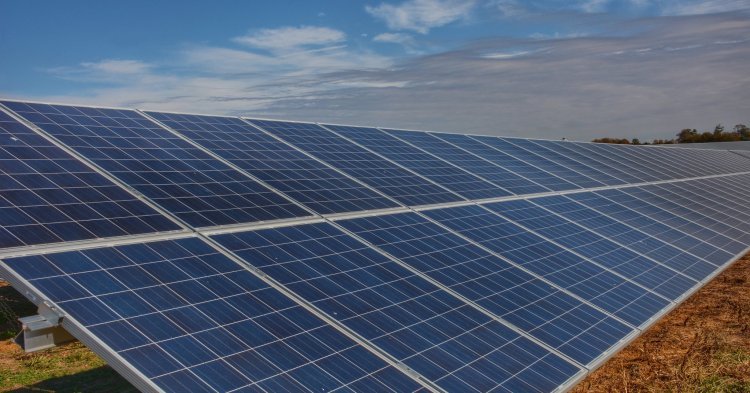This article is the second in a three-part series on the resurgence of industrial policy in Europe. The first article in the series can be found here.
Since coming to power in January 2021, USA President Joe Biden has had to deal with: the fallout of the Covid-19 pandemic; the increasing disregard of sectors of the opposing Republican Party for democratic institutions and processes; and, most recently, the Russian invasion of Ukraine. In trying to tackle these problems, he appears to be trying to reframe the dominant economic paradigm in Washington, D.C.
Through a series of four bills, worth $4.12 trillion dollars in total, the US government is seeking to help their country recover from the Covid pandemic, build up their infrastructure and industry, and reduce inflation and foreign energy dependence, while addressing several common themes: investing in low- and middle-income communities, tackling climate change and addressing economic inequality.
Indeed, Biden and his team appear to be eying a shift in the economic paradigm, dubbed by some as “middle-out economics”, which puts labour and the middle class at the centre of efforts to grow the economy in a more equitable manner, instead of capital and the wealthy as was the case under neoliberalism’s “trickle down” and “supply side” economics. Therefore, only by strengthening public services (healthcare, education, etc.) and institutions (unions, industry, etc.) that sustain the middle class can the economy overall be propelled.
Thus, the Infrastructure Investment and Jobs Act set out to improve infrastructure for low- and middle-income communities, while the Inflation Reduction Act gives $37 billion in incentives for advanced manufacturing in the USA that meet certain wage standards, and has “made in America” and labour quality requirements for products seeking to qualify for $171 billion in subsidies to solar panels, batteries, electric vehicles, and more. Additionally, the CHIPS and Science Act gives $74 billion for semiconductor research and manufacturing in the USA.
Overall, with this set of bills the USA is for the first time on the path to meet its climate objectives, with an expected 40% drop in emissions by 2030, while giving very strong incentives for manufacturing to flourish again in the country across a range of high-tech industries. However, the incentives in these bills also have a very clear, strategic focus: counter the reliance on Chinese manufacturing on everything from batteries to solar panels and cut short the risk of that dependence extending to microchips and semiconductor technologies. Meanwhile, at the other side of the Atlantic, the European Union (EU) and its member States are also seeing their own shift in their industrial outlook.
The new European industrial policy
While change had begun some years earlier (for example, the European Battery Alliance dates from 2017), the European Union only fully changed its industrial focus following the onset of the 2020 Covid pandemic. Having published the 2020 Industrial Strategy on the 10th of March of 2020 (one day before the World Health Organization declared Covid-19 a global pandemic), the European Commission and the member States were quickly forced to adapt and expand this Strategy in the light of the deep vulnerabilities exposed as a result of the pandemic.
The collapse of international supply chains left European countries starved of goods essential to fight the disease, such as facemasks or ventilators. Not only that, but the plummet in foreign production of other key goods, such as microchips, hit many dependent industries hard, taking months to recover. In response, the Commission published an analysis on the EU’s strategic dependencies on third parties across six key sectors, finding 137 products in sensitive economic sectors that have particularly strong supply chain risks.
While some efforts in this regard were already underway (notably around electric batteries), following the collapse of international supply chains, interest grew in reducing the Union’s international dependence on these and other key goods and technologies, and in re-growing Europe’s industry in general. At a pan-European level, this has been channelled mainly in two manners.
Firstly, and already prior to the pandemic, the Commission has encouraged the use of the Important Projects of Common European Interest (IPCEI) instrument by the member States. IPCEIs are a provision in the Treaty on the Functioning of the European Union that allows member States to circumvent the typically very strict rules on State aid to help private companies in situations where said state aid is used for strategic projects that help multiple member States. For years, scarce use had been made of this tool, but since 2019 the Commission has promoted the design and approval of multiple IPCEIs on topics such as battery development, renewable hydrogen and edge computing with billions of euros in targeted State aid.
The future impact of the IPCEIs, however, is set to be dwarfed by the Next Generation EU programme developed during the worst of the Covid pandemic to relaunch the European economy. This historical fund was the first to be financed with joint EU debt, collecting over €750 billion in funds to be split among the member States. As with the USA’s various post-pandemic aid packages, Next Generation EU will finance the installation of solar and wind power, aid in home energy efficiency improvements, launch the EU’s first renewable hydrogen projects, and more.
Also as in the USA’s case, these funds are being used by member states to finance the development of Europe’s industrial base for the digital and green transitions. For example, member states are helping finance the pivot of the European car industry (a crucial economic sector across much of the bloc) towards the electric and connected vehicle revolution, not only at the car-making plants, but with the construction of battery “giga-factories” that can supply those electric vehicles and other products with their battery packs – a strategic technological product which China dominates with around 79% of global production.
The second main focus of State aid under the Next Generation programme is the semiconductor industry. As the digital transition progresses, it is clear that microchip production will be more and more crucial and strategic to the economy and technology of the future, and the EU is in a weak position to embrace the change. Microchip fabrication is overwhelmingly done in Asia (mainly Taiwan and South Korea), while chip design is dominated by American corporations, with the EU having no significant home-grown champions. With the increased worry surrounding international supply chains, in 2022 the Commission also moved to propose the landmark European Chips Act, setting the objective of quadrupling European microchip production by 2030. To this end, the Chips Act is setting to foment private and public investment alike to facilitate personnel training, encourage microchip design ventures and establish pilot production lines for advanced chips, among other things.
Gas troubles
However, only with the undergoing Russian invasion of Ukraine have the European Commission and the member States demonstrated how far they are willing to go with their new and more interventionist industrial policy. It had long been clear to many that Russian President Vladimir Putin would one day use the gas supplied from his country to Europe as a bargaining chip against the West should it come to that – and yet many countries, notably Germany, dismissed these concerns and increased their import of Russian natural gas to power their homes and industries.
Indeed, since the Russian invasion of Ukraine and the West’s resolute response in sanctioning Russia and arming Ukraine, the Russian gas supply has been drastically reduced, both due to “technical problems” and suspected Russian sabotage as well as through a concerted European effort to drop the Russian supply now that it was clear Putin would use it against the EU.
Thus, the global gas market went into disarray, causing prices to soar to levels never seen before and the worst inflation in 40 years in the EU. And little by little, the Commission and member States have moved to protect their citizens and companies from the worst of the damage. What seemed unthinkable interventions of the free market a mere few years ago are now either a reality (such as limiting gas prices in the Iberian Peninsula) or the focus of intense discussion at the pan-European level (such as extending those price limits to the whole EU or taxing the excess profits made by energy companies thanks to soaring energy prices).
With this, the EU and its member States are contributing to the creation of a new industrial policy, more strategic in its outlook regarding the need for domestic production of crucial technologies and its beneficial economic effects, to ensure the success of the European digital and green transitions. And crucially, there is, for the first time, an emergent European industrial policy – funded by joint EU debt and coordinated by the European Commission but approved and implemented by the member States. It remains, however, to see if this new outlook can win the future.
This article series will be continued in Part III.


Follow the comments: |
|
